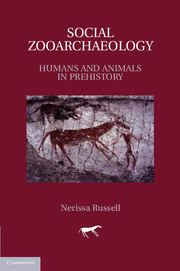Book contents
- Frontmatter
- Contents
- List of tables
- Preface
- 1 Beyond protein and calories
- 2 Animal symbols
- 3 Animals in ritual
- 4 Hunting and humanity
- 5 Extinctions
- 6 Domestication as a human–animal relationship
- 7 Pets and other human–animal relationships
- 8 Animal wealth
- 9 Meat beyond diet
- 10 Studying human–animal relations
- References
- Index
7 - Pets and other human–animal relationships
Published online by Cambridge University Press: 05 June 2012
- Frontmatter
- Contents
- List of tables
- Preface
- 1 Beyond protein and calories
- 2 Animal symbols
- 3 Animals in ritual
- 4 Hunting and humanity
- 5 Extinctions
- 6 Domestication as a human–animal relationship
- 7 Pets and other human–animal relationships
- 8 Animal wealth
- 9 Meat beyond diet
- 10 Studying human–animal relations
- References
- Index
Summary
How, if at all, do we own our pets? (Shell 1986:142)
In the previous three chapters I have discussed human relations with wild and domestic animals. However, many human–animal relationships do not fit neatly into these two categories. I now consider some of these other relationships and their implications for people, animals, and the archaeological record.
The spectrum of human–animal relationships
As discussed in Chapter 6, some have rejected the distinction between wild and domestic in favor of a continuum of human–animal relations (see also Harris 1996). Although they are right to insist that human–animal relations cannot be adequately expressed by a simple dichotomy, neither is a smooth continuum that places human–animal relations somewhere between two poles (random hunting to factory farming) a satisfactory description. Not only is there a quantum distinction, rather than just a difference of degree, between the domestication of herd animals and other human–animal relationships but many human–animal relationships are also of a different kind from hunting or herding: More than just the intensity of the relationship varies. I therefore find it preferable to think in terms of a spectrum, rather than a continuum, of various types of human–animal relationships. Alternatively, one could conceptualize human–animal relationships in three or more dimensions, with multiple axes of variation rather than a single continuum.
- Type
- Chapter
- Information
- Social ZooarchaeologyHumans and Animals in Prehistory, pp. 259 - 296Publisher: Cambridge University PressPrint publication year: 2011



